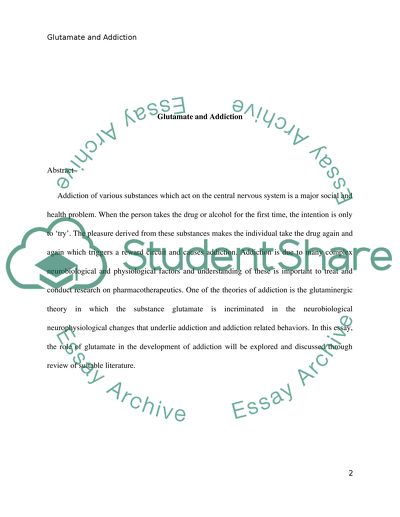Cite this document
(“Glutamate and Addiction Essay Example | Topics and Well Written Essays - 1500 words”, n.d.)
Retrieved from https://studentshare.org/psychology/1430336-glutamate-and-addiction
Retrieved from https://studentshare.org/psychology/1430336-glutamate-and-addiction
(Glutamate and Addiction Essay Example | Topics and Well Written Essays - 1500 Words)
https://studentshare.org/psychology/1430336-glutamate-and-addiction.
https://studentshare.org/psychology/1430336-glutamate-and-addiction.
“Glutamate and Addiction Essay Example | Topics and Well Written Essays - 1500 Words”, n.d. https://studentshare.org/psychology/1430336-glutamate-and-addiction.


